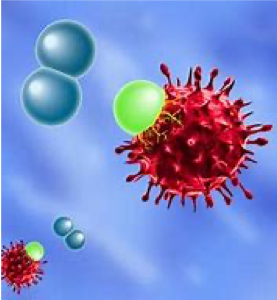Safe Ozone Therapy in Dentistry… and Beyond

When most people hear the word ‘ozone’ the first thing that comes to mind usually has something to do with atmospheric conditions over the Antarctic. For those of us in the holistic dental field, ozone means much more.
How Ozone Works
Ozone, a gas known as O3, wipes out bacteria, fungi and other toxins that invade the body while causing zero harm to the human body. This is done by exciting the regular stable oxygen (O2) to the highly unstable O3 state. The Ozone molecule wants to shed that extra oxygen atom to return to its stable state very badly. When placed in the area of infection, Ozone unloads that extra oxygen molecule, which binds to anaerobic bacteria, fungi or viruses and blows them up!
The Many Uses of Ozone
Research on the use of ozone indicates that it may lend itself to a variety of health optimizing therapies in various medical modalities. The natural oxidizing properties of O3 is known to promote health in many ways including;
- Anti-aging
- Oxygenation increases in blood cells
- Boosts the immune system
- Increases energy production in cells
- Anti-inflammatory
- Reduces acidity in the body
- Anti-microbial
- Kills cancer cells
The Science About Ozone
Ozone is a versatile bio-oxidative therapy in which oxygen/ozone is administered to a patient to obtain therapeutic benefits. Ozone therapy has been used for treatment of various diseases for more than a century. Ozone interferes with the metabolism of bacterium-cells, inhibiting and blocking the operation of the enzymatic control system. A sufficient amount of ozone breaks through the cell membrane leading to the destruction of the bacteria.
Its unique properties, noninvasive nature, absence of side effects or adverse reactions drew attention from healthcare practitioners, who rightly viewed it as an important medical treatment. In dentistry, Ozone is used today in a variety of ways; in its gaseous form, as ozonated water and as ozonated oils. In all aspects of the medical field, the high oxidation potential of ozone makes is an exciting element in the fight against:
- Bacteria
- Protozoa (an advanced type of fungus)
- Viruses
- Fungi
Laboratory studies have long proven the promising potential of ozone therapy in dentistry, and it is used more and more in applications at dental offices all over the world. Recognized as a preventive therapy in dental cavities or caries and an effective disinfectant in root canal work, ozone has also been used successfully in the treatment of more severe conditions including bone diseases of the jaw. It is powerful in the prevention of plaque formation and it is sometimes added to the dental unit water line to purify and disinfect water.
No matter how it is used, ozone is completely painless in its application, it is biocompatible and helps stimulate blood circulation while increasing the body’s natural immune response.
Prevention and Ozone Therapy in Dentistry
The use of ozone therapy in dentistry is particularly exciting when it comes to preventative care. With its antibacterial, antiviral and antifungal properties it not only stops the growth of cavities but also helps prevent and reverse the damage caused by cavities. Ozone’s capacity to oxidize – or essentially dissolve bacterial cells makes it possible to completely stop the production of bacteria. As an agent of oxidation, ozone proves lethal to a range of harmful microorganisms without damaging healthy living cells in this process.
When ozone is used in conjunction with re-mineralizing agents, it promotes the regeneration of hard, healthy tooth structure. And under the right conditions, ozone therapy can lead to remineralization of a decayed tooth, potentially restoring it to complete health.
Another way ozone lends itself to healing and prevention is in the treatment of periodontitis, or gum disease. Periodontitis is bacterial in nature and since ozone has been proven effective at eliminating bacteria, it is the perfect treatment for this disease. In addition to its antimicrobial aspects, ozone’s anti-inflammatory properties make it highly beneficial in fighting gum disease and promoting long-term healing process.
The Bottom Line on Ozone
The availability of ozone treatment in both the medical field and the dental field is rather low in the United States when compared to its use in other developed nations. But, as research continues to prove that ozone is an effective and safe treatment, demand for its use will only continue to rise. While traditional dental practices prefer to stick with the traditional tried-and-true methods of invasive dentistry alone, ozone therapy is fast becoming a fundamental element in the standard of care for modern holistic and natural dentistry practices. Today ozone is used in almost all aspects of dentistry.
Dr. A. J. Boyajian works in unison with qualified health experts, creating complete dental and general health programs for patients. When it comes to something as valuable as your teeth, you want to be sure they remain strong and beautiful for a lifetime. To learn more about what Ozone Therapy can do for you, call our office at 310-670-6944.
